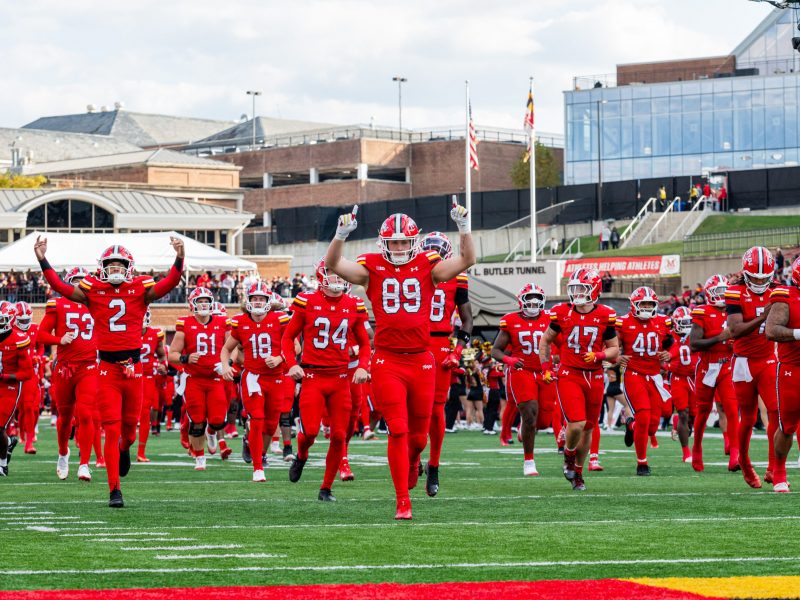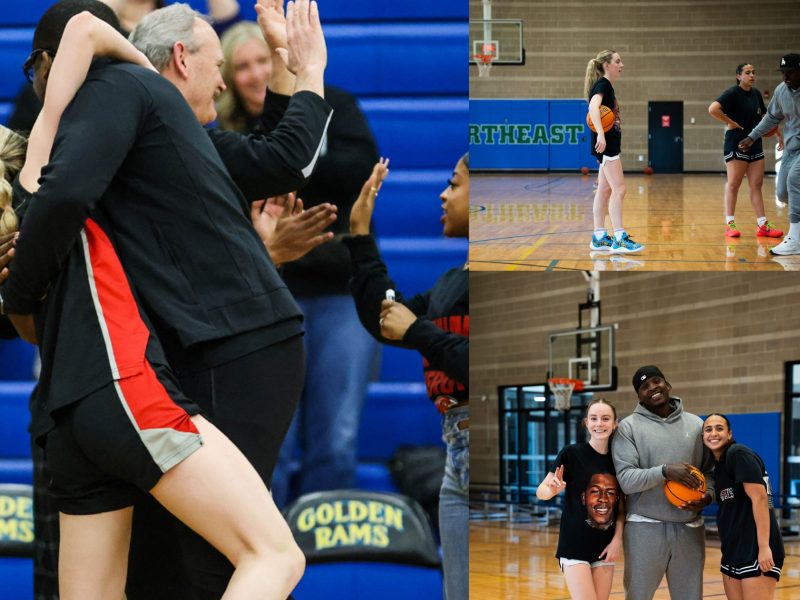
Christian Science chaplain Robert Snyder poses for a portrait outside the Memorial Chapel.
When a painful growth formed under Robert Snyder’s arm 25 years ago, he didn’t go to a doctor. Instead, he prayed. Every night before bed he studied bible verses and read religious works and articles. After a few weeks, he said it healed by itself.
The healing was not a shock for Snyder. Alongside people at the Christian Science Society — located about one mile from The Clarice Smith Performing Arts Center — Snyder is part of a small international Christian movement that actively practices faith and prayer healing instead of traditional medical techniques.
READ MORE: UMD students to attend events, Mass during Pope Francis’ D.C. visit
Unlike other types of Christianity, Christian Science follows the work of 19th century author Mary Baker Eddy, who founded the religion based on the idea of spiritual healing, said Snyder, Maryland’s Christian Science chaplain. Eddy’s book, Science and Health with Key to the Scriptures, is read at services along with the Bible.
Based on the ideas in her book, Christian Scientists believe praying is the most effective form of healing, and they encourage followers to use spirituality and prayer to heal both physical and mental problems, ranging from headaches and broken bones to more extreme illnesses, like cancer.
“Some healing can come quickly and sometimes they don’t,” Snyder said. “They can take days or weeks, but you just be persistent and keep at it. We feel like we don’t really need doctors or pills.”
READ MORE: Religious women speak on gender equality in spiritual life
Many Christian Scientists will often avoid medicine, doctors or vaccines in favor of prayer, he said. The extent of this often varies from person to person, Snyder said, as the Church does not force participants to avoid medical care. Many will still use modern medicine techniques, going to doctors and using drugs to treat illnesses.
Snyder follows this belief and does not go to the doctor or take any medication – even Advil. He has “a couple” of vaccinations, mostly ones required by law to work or travel. For example. Snyder received the Yellow Fever vaccine before traveling to Peru.
“A lot of times we feel like we don’t even want to get it diagnosed, because if you get diagnosed, it’s almost like you’re accepting a problem,” he said. “If you went to get diagnosed and they said ‘Oh, it’s this and that,’ then what happens is you accept that in your thinking and you start feeling worse.”
At Wednesday’s weekly meeting there were five people present. On Sundays, about six to 10 congregants attend services, he said. Just one University of Maryland student attended last Sunday’s service, Snyder said, which is normal.
“For the University of Maryland, as far as I know, I am the only student who identifies that way,” entomology doctoral candidate Elanor Spadafora said.
Snyder also does not keep track of how many Christian Scientists are active on the campus, because it is against the religion’s guidelines. They would rather focus on helping individuals, he said.
“Christian Scientists shall not report for publication the number of the members of The Mother Church, nor that of the branch churches,” according to the Manual of the Mother Church.
The Christian Science Mother Church in Boston, which acts as the religion’s headquarters, does not publish or research that information either and never has, the church’s spokeswoman Ingrid Peschke wrote in an email.
The religion “has certainly not had much of an increase” recently, said William Stuart, anthropology professor at this university. Most religious people are turned off, because it “actively discourages modern medicine,” he said. There also has been a fair amount of controversy surrounding the religion, he said, where people saw practicing as a form of child abuse.
Over the years, Snyder said there has been a decrease in Christian Science, but there has also been a decrease in all religions. At the Hyattsville church, they currently have about three to five children at the daycare, but no college or high-school-aged members, as most grew up and moved away, Laura Flicker, one of the Sunday School teachers.
But for Snyder, Christian Science is a way of life, teaching him to focus on positive thought and to live a “pure and healthy life.” The church will not turn away congregants who seek professional medical help, he said.
Spadafora said praying has helped heal headaches and a broken bone. But the most memorable healing experience happened when she was pregnant last year.
During a prenatal checkup, doctors told her that her baby might be born too early and if that happened, would have little chance of surviving.
“Obviously that was a catalyst for prayer,” she said. “We were dedicated to prayer over the next few months.”
The baby, Pietro, was born on time. He’s completely healthy, she said. Now, she brings him to church, where he stays in the nursery while she reads to the congregation.
She also said that she will vaccinate him.
“My practice of Christian Science is not a selfish one,” she said. “It is one that teaches love community. And it is also a protection of the community.”


